Cadillac Car Reviews and Road Tests |
|
 |
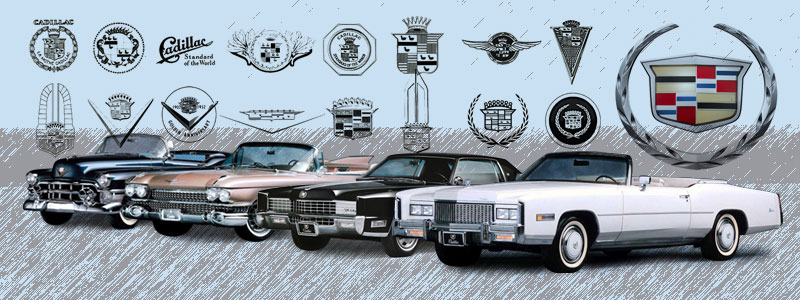
|
|
Founded by Henry Leland in 1902, who named the
company after the seventeenth-century French
explorer who founded Detroit. Quickly established
a reputation for innovation, even after being
absorbed into the GM conglomerate in 1909. In
1912 the company introduced the Delco electric
ignition and lighting system, and the powerful
V8 engine was also a Cadillac first. Legendary
automotive designer Harley Earl was responsible
for giving Cadillac’s their elegant, streamlined
look in the 1920s.
He is credited with introducing
the first tailfin on the new designs in the late
1940s, inspired in part by the fighter planes
of World War II, an automotive fashion trend
that would take other car manufacturers a decade
to catch up. During the 1950’s Cadillac's
became extremely expensive, and heavy, attributable
not only to the cars enormous size but the long
list of luxury appointments fitted, such as imported
leather seats, state-of-the-art climate and stereo
systems and power windows.
The brand also began
to take hold in popular culture: Chuck Berry
sang of besting one in a race in his 1955 hit "Maybellene," and
Elvis Presley began driving a pink Caddy not
long after his first few chart successes. Cadillac's
hold on the status-car market began to wane in
the 1960s when both Lincoln and Chrysler began
making inroads with their models. Mismanagement
by GM engendered further decline.
Cadillac production
reached 266,000 cars in 1969, one of its peak
years. That model year's popular Coupe DeVille
(with a wheelbase of over ten feet) sold for
$5,721; by contrast the best-selling Chevrolet,
the Impala, had a sticker price of $3,465. There
were media-generated rumours that people sometimes
pooled their funds in order to buy a Cadillac
to share. In the 1970s, the brand became indelibly
linked with the urban American criminal element,
the ride of choice for pimps and mob bosses alike.
This in turn led well-heeled Americans to opt
for European luxury marques.
Also see: The History of Cadillac (USA Edition) | Cadillac Brochures | Cadillac Auto Ads |
 |
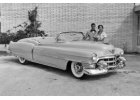 |
|
1953 - 1954
The first iteration of the El Dorado was a low volume convertible only model, available in four unique colors - Aztec Red, Alpine White, Azure Blue and Artisan Ochre. Convertible tops were available in either black or white Orlon. More>> |
 |
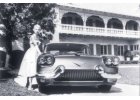 |
|
1955 - 1958
For 1955, the Eldorado's body gained its own rear end styling with high, slender, pointed tailfins. These contrasted with the rather thick, bulbous fins which were common at the time and were an example of Eldorado once again pointing the way forward. More>> |
 |
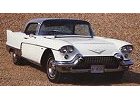 |
|
1957 - 1958
It was curvy with pillarless doors and knife-edged fins
with a 90 degree wraparound on the front screen. Its roof
was built from stainless steel and with its narrow white
sidewalls and twin headlights it was seen as an industry
first. More>> |
 |
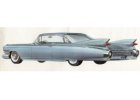 |
|
1959 - 1966
A different Eldorado Brougham was sold for 1959 and 1960. These cars were not quite so extravagantly styled but were very unusual pieces in themselves. Priced at $13,075, they cost $1 more, each, than their older siblings. More>> |
 |
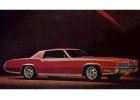 |
|
1967 - 1970
The Eldorado was radically redesigned for 1967. Intended for the burgeoning personal luxury car market, it was a "personal" Cadillac sharing the E-body with the Buick Riviera and Oldsmobile Toronado that had been introduced the previous year. More>> |
 |
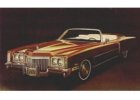 |
|
1971 - 1978
When GM's full-size cars were redesigned for 1971, the Eldorado regained both a convertible model and its fender skirts. The 126.3-inch (3,210 mm) wheelbase version of the Eldorado would run through 1978, receiving facelifts in 1973 and 1975. More>> |
 |
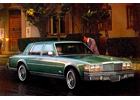 |
|
1975 - 1979
For most, driving simply means around town or down a long and straight highway. When it was rare to find yourself on the twisty stuff, the Seville's suspension, by front wishbones and anti-roll bar, with semi-elliptic springs at the rear, was near perfect. Similarly there was little need for particularly precise steering, and this was an area in which the Seville's recirculating ball system revealed its typically American origins. More>> |
 |
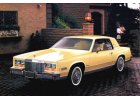 |
|
1979 - 1985
For 1979, a new, trimmer Eldorado was introduced, and for the first time the car shared its chassis with the Buick Riviera as well as the Toronado. Smaller 350 and 368 in³ (5.7 and 6.0 litre) V8's replaced the 500 and 425 in³ (8.2 and 7.0 litre) of the preceding model, giving better fuel efficiency. More>> |
 |
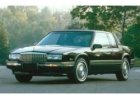 |
|
1986 - 1991
For 1986, yet another downsizing occurred, and it was fairly extreme. In fact, the costly Eldorado was now the same size that GM's own compact cars had been only a few years earlier, and much smaller than Lincoln's competing Mark VII. More>> |
 |
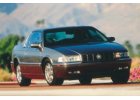 |
 |
1992 - 2002
For 1992, a new Eldorado appeared. It was in fact only slightly bigger than its predecessor, but it was so much more adroitly styled that it seemed greatly so. Window glass was once again frameless, and shortly after introduction Cadillac's new Northstar V8 became available in both 270 and 295 hp variants, replacing the 200 hp 4.9 litre. More>> |
|
|
| Sell Your Car or Parts Browse the Classifieds It's Absolutely Free! - Find Out More |
|




